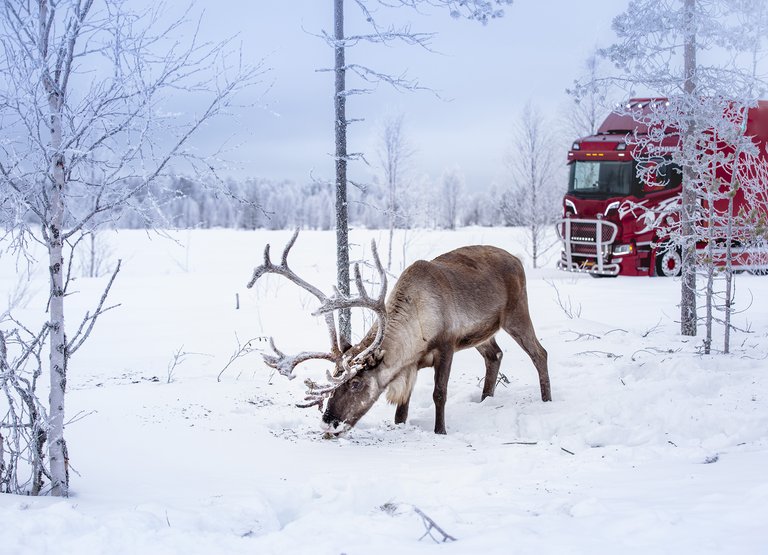Safe Progress Through Snow and Ice: The Latest Winter Regulations for Commercial Vehicle Tires
- Continental summarizes the updated regulations for winter tires in 38 countries
- Driving in the snow: Conti Scandinavia tires provide all-round safety
- Retread products expand tire management offering – also for winter tires
Hanover, September 20, 2023. With the fall and winter season approaching, Continental has once again compiled the latest regulations covering winter tires for commercial vehicles from 38 countries – including changes made for winter 2023/2024. The legal regulations governing the winter equipment for trucks, buses and vans are handled differently in different countries. Continental will publish the applicable legal recommendations in the fall, giving fleet managers, bus and truck drivers a clear overview of the latest winter regulations in the countries where their vehicles are operating.
Differences in winter regulations depending on the weather conditions
In countries such as Great Britain, Hungary, the Netherlands, Poland and Portugal, there remains no general obligation to fit winter tires on commercial vehicles. In Germany, trucks from 3.5 metric tons must use 3PMSF tires for their steer and drive axles. In Italy, the winter equipment required is shown by traffic signs on some roads, while in countries including Bulgaria and Latvia a minimum tread depth is prescribed. In addition, Scandinavian countries like Sweden stipulate that vehicles weighing more than 3.5 metric tons must use tires with the 3PMSF or POR mark, or studded tires, on the front and drive axles, as extreme weather conditions are prevalent. Using M+S tires will only continue to be allowed here until November 30, 2024.
Changes in France, Iceland, Kosovo and Switzerland
The current requirements for Germany are unchanged compared to last year. The same applies in the important transit countries and the majority of other countries. However, there are new updates for France, Iceland, Kosovo and Switzerland.
In France, winter equipment is now required on specially designated roads. From November 1 to March 31, at the discretion of the local authorities, N1/N2/N3 vehicles with trailers have to be equipped with removable anti-skid devices such as snow chains for at least two driven wheels. N1/N2/N3 vehicles without trailers have to be fitted with 3PMSF winter tires on at least two wheels on each axle. In France, type M2/M3 buses must be equipped with removable anti-skid devices for at least two driven wheels or with 3PMSF winter tires on the front steer axle and at least two driven wheels. A transition period until November 2024 applies for M+S tires already used. Vehicles with a permissible gross vehicle weight of under 3.5 metric tons can drive on studded tires from November to March, provided they do not exceed a maximum speed of 90 km/h. Vehicles fitted with studded tires have to be identified by a label in France. Using studded tires on vehicles with a gross vehicle weight over 3.5 metric tons is prohibited here.
In Iceland winter tires are not mandatory. From November 1 to April 14, tires must have a minimum tread depth of 3 millimeters. Snow chains are prohibited if they might damage the roads. Using studded tires is permissible in Iceland from November 1 to April 14.
In Kosovo, transportation vehicles with a maximum permissible gross vehicle weight of 3.5 metric tons must use winter tires with a M+S marking on all wheels from November 15 to March 15. Summer tires with a minimum tread depth of 4 millimeters may still be used, as long as snow chains are fitted on the tires on the driven wheels. Buses and transportation vehicles with a permissible gross vehicle weight of more than 3.5 metric tons must use snow chains or winter tires (with M+S marking) on the driven wheels. Snow chains may be used on the driven wheels, but studded tires are prohibited.
The winter regulations in Switzerland have been updated and now permit the use of snow chains on suitable roads with appropriate signposting.
Conti Scandinavia tire line offers all-round safety – all year round
Safe driving characteristics on wintry roads as well as in warmer conditions are the standout attribute of this tire line. “The optimized rubber compounds of the Scandinavia tire family offer plentiful grip on snow, ice and wet surfaces without compromising on the tread’s mileage, wear and lifespan,” explains Hinnerk Kaiser, Head of Product Development Bus and Truck Tires. This tire line offers tires for all axle positions and uses special two-stage siping technology. In winter this provides secure performance and in summer the result is fuel-saving, optimized rolling resistance and high mileage capability. Both aspects have a direct effect on fleet efficiency. “The high natural rubber content of our tires give them lower rolling resistance and the flexibility they need in low temperatures,” adds Kaiser. Another plus-point is that they are comparatively quiet.

Annette Rojas
Spokesperson commercial vehicle tires
Public Relations, Media and Communication
Replacement Tires EMEA
Continental Reifen Deutschland GmbH




